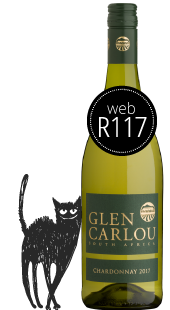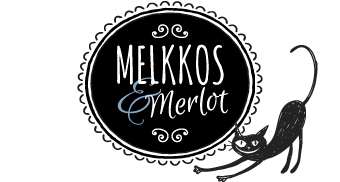I’ve been sitting on this rabbit recipe for a while – since March to be precise – because I know that rabbit is a bit unusual. Not in France, Italy or England, there they understand the delight that is rabbit meat. But in SA it’s a touch, well, exotic I guess. Add to that the fact that many folks see cute fluffy bunnies with bobble tails and silky ears when they hear the word rabbit, and you can understand why close to Easter did not seem like a good time to suggest it. But we’re about as far from Easter now as we can be, so I figure it’s about as safe as it’s going to get.
Now if you’ve never eaten rabbit before, you’re not alone. When I phoned my BFF to come share my rabbit dinner, the conversation went something like this:
Me: “Have you ever eaten rabbit?”
Her: “Ag no, sis man.” (For my foreign readers, ag no sis man is a South Africanism essentially indicating extreme shock with a generous serving of revulsion on the side.)
Her – following a very pregnant pause: “What does it taste like?”
Me: “Well, like chicken. Kinda…”
Of course rabbit does not taste like chicken, but chicken was the closest appropriate animal I could lay my hands on. Some folks say it is a bit wild. Maybe it is – if you catch a wild one in your veggie patch and do the dreaded deed yourself. But we both know you’re not going to. Reared-for-the-table rabbits really aren’t gamey at all. There are many ways to prepare it. Green olives often feature in recipes, especially in Italy, and that’s lovely.
But my favourite is probably this rather more French one – with white wine, loads of Dijon mustard and just a dash of cream. I add incredibly crunchy pancetta crisps too, just because I can. You could serve it with boiled baby potatoes, but I prefer inelegantly ripping crusty baguette or ciabatta for dipping into those mustardy, garlicky juices. A simple green salad with a very tangy vinaigrette offsets the creamy richness perfectly. A glass or two of Chardonnay and I’m a happy chappie. Now if you cannot get your hands on rabbit or feel that eating this wee cute beastie is really just a bridge too far, you can make this recipe using skinless chicken thighs instead.
All you need is…
1 rabbit, jointed (see Tips, Tricks & Trivia further down for how to joint a rabbit)
8 tbs plain flour
salt and coarsely ground black pepper
olive oil and butter
1 large onion, finely chopped
2 fat unpeeled cloves of garlic
¾ cup dry white wine
2 cups (500ml) fresh chicken stock (Woolies has it in their fridge section – stock cubes are not a suitable substitute in this instance!)
1 very large carrot (or 2 small), peeled, halved and quartered
bouquet garni consisting of: 2 fresh bay leaves, handful of parsley, 2 sprigs thyme, tied up with string
2 tbs Dijon mustard (I only use Maille)
¼ cup fresh cream
salt and black pepper, to taste
12 thin slices pancetta
Season the flour with a quarter teaspoon salt and black pepper. Dip the rabbit pieces in the flour and coat all over. Heat 2 tbs oil and 1 tbs butter in a non-stick saucepan. Fry the rabbit pieces until they are golden brown. If the pan gets to dry simply add another splash of oil. Remove the rabbit and set aside. Add the onions to the same pan and fry over low heat for about 10 minutes until soft, but not brown. Smash the garlic cloves with the side of a knife to open them up and pop them in the pan skin and all.
Deglaze the pan by adding the white wine and cooking it for a minute or two whilst stirring. Now add the stock, carrots, bouquet garni and rabbit pieces. Pop the lid on, turn the heat real low and cook until the rabbit is succulently soft. How long this takes depends on the rabbit, anywhere from 40 minutes to 90 minutes.
Make the pancetta crisps 10 minutes before you serve. Simply line a baking sheet with baking paper, place the pancetta on top, cover with another layer of baking paper and weigh down with a second baking sheet. Pop in a 180 degree Celsius oven for 10 minutes and remove. They’ll crisp up as they cool down.
Once the rabbit is done, lift out the meat. Remove the bouquet garni and the carrots, turn up the heat and cook without the lid for 5 minutes to reduce the sauce. Now stir in the mustard and the cream, bring to the boil and pop the rabbit back in to warm through. Taste for salt and adjust if need be. Give it a few twists of black pepper, scatter with loads of roughly chopped flatleaf parsley, add a few pancetta crisps and tuck in.
serves
4
prep
20 min
cook
40-90 min
tips, tricks and trivia
How to joint a rabbit
Jointing a rabbit is real easy. All you need is a chopping board, a heavy, seriously sharp chef’s knife and a bit of courage – because I know this may be a bit of a stretch for you. In SA chicken always comes with its head off, that’s not the case with rabbit. Chances are the rabbit you buy at your butcher or specialist deli will still have its head on. Get rid of that first by simply cutting through the neck and put the head somewhere it can’t look at you. Now you’re good to go.
1) Turn the rabbit over on its back and trim away the flappy bits of flesh at the bottom of the belly.
2) Next remove the thighs by cutting through the flesh in the thigh joints. Once you can see the joint, whack it with your sharp knife to sever the joint and off the thighs come.
3) Do exactly the same with the front legs, using the joint as your guide.
4) Now you have the body left. Split the ribcage from the saddle so you’ve cut the body in half. If you want, the saddle can be split in half lengthways along the spine, so it creates two portions. The ribcage mostly goes in the pot for added flavour, so you can leave that whole. That’s it. You’re done!
![]()
enjoy with
My choice with this is Glen Carlou’s 2017 wooded Chardonnay. With so much on offer in the Cape, it’s easy to forget old favourites, so I was happy to reacquaint myself with this Franschhoek estate at the Verimark wine trade fair a few months ago. I loved their rosé (read more about that here) and I adored this lightly wooded Chardonnay. It’s 100% barrel fermented in French oak, but the winemaker has a light hand because the wood lends complexity and aging potential without being overpowering.
Instead it lends this wine a toasted, creamy character that still allows expressive fruit to shine through. On the nose you’ll find those Chardonnay markers of citrus and green apple. On the palate it translates into ripe pear, marmalade and a pleasingly long finish with a hint of almond flower. The 2017 marks the 30th year of Chardonnay at Glen Carlou and it’s a bit of a showstopper at just R117 online.
This wine has won numerous awards including Gold in the 2018 Sommeliers Selection; Top Chardonnay in the Novare Terroir Wine Awards and, most recently, gold in the 2018 Veritas Awards.



















Leave A Comment